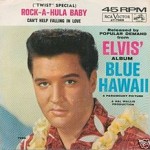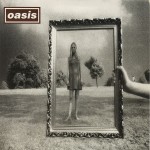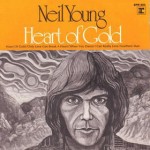Happy Holidays! Here’s a simple fingerstyle arrangement of the Christmas favorite, Silent Night. Enjoy!
Tag Archives: G
Jane Says by Jane’s Addiction
A student recently asked me to teach them this. “Jane Says” by Jane’s Addiction is an insanely catchy song with a cool guitar riff that is essentially just two chords (G and A) with a couple pull-offs to decorate the A chord.
Learning this song offers the chance to practice a couple of useful ways of playing G and A chords. Notice that the 5th-string is muted by your ring finger while playing the G-chord which frees up the index finger and allows it to more fluently transition to the A-chord which is played with only your index finger by laying it across the 2nd, 3rd and 4th strings and the 2nd fret. This allows your ring finger to easily reach the 4th fret for the pull-offs during the A-Chord. The chorus uses a similar index finger barre covering the 2nd and 3rd strings during the Gsus2add#11 (a fancy name for a simple modification of a G chord). Arrows are included in the sheet music to indicate the strumming pattern I recommend.
Enjoy!
Can’t Help Falling In Love by Elvis Presley – Valentine’s Day Repertoire #1
Chords/Lyrics Finger Picking Pattern
With Valentine’s Day less than a week away, it’s time for all of us to remember why we picked up the guitar in the first place: to impress girls that are way out of our league (such as our wives or girlfriends). That’s why between now and V-Day I will be showing you how to play a few of the all-time best love songs ever sung so you can woo the object of your affection and honor your original motivation for playing the guitar.
Our first song, the classic 1961 hit, “Can’t Help Falling In Love” by Elvis Presley, is sure to make her swoon. I have provided both the lyrics with chords as well as a suggested finger picking pattern (it is also possible to use a pick) which closely mimics the piano on The King of Rock ‘N’ Roll’s original recording. Don’t be thrown off by the 6/8 time signature – there is nothing but straight eighth notes in my arrangement.
Good luck! Let me know if you have any requests for more love songs!
Drone Chord Progressions 1 of 3 – Wonderwall by Oasis
Sheet Music/TAB MIDI Sound Bytes
Greetings! This is the first of three posts about a topic I like to call “Drone Chord Progressions” (if someone knows the correct or a better term for it let me know). “Drone Chord Progressions” are chord progressions where one or more strings are fretted at the same fret throughout the entire progression. They are great (especially for beginners) because they are easy but still sound good and can be found in countless popular songs.
The first drone chord song I will show you is one of the most popular beginner guitar songs of all time as well as an anthem of the 90’s generation, however, it can still be heard played today by high-school boys all over the English speaking world who are desperately trying to earn their first kiss. “Wonderwall” by Oasis is a drone chord progression because it can be played without moving your ring-finger and pinky from the 3rd fret of the b-string and high e-string respectively for the entire song.
I have added Wonderwall to the free sheet music/tab section of the website as well as some MIDI sound bytes for each of the four sections of this song to help you hear the strumming pattern.
Heart of Gold by Neil Young
Intro Sheet Music/Tab Chords/Lyrics
Here is the music for a classic song that I forgot just how good it is until a student of mine recently asked to learn it. “Heart of Gold” by Neil Young was first released in 1972 on his excellent “Harvest” Album when Young was only 26 years old. This song is simple but expresses a sentiment that is complex and universal: man’s search for the elusive Heart of Gold – something beautiful and enduring, the lengths we will go to find it, and the anxiousness caused by the knowledge that our time is limited. A little fun fact about this recording: the backup vocals are sung by none other than James Taylor and Linda Ronstadt who happened to be passing through Nashville at the time of the recording to appear on the Johnny Cash Show.
This is a great song to have in your arsenal as it has deep meaning and is easily recognizable to many people, especially the intro which I have added to the Sheet Music/Tab section of the site. It is not too difficult to play but I do have some advice to make it easier and sound more like the original song:
-This song is played with a pick.
-The entire first measure is an Em7 chord which you should fret using your index, middle and ring fingers (no pinky!) so that you can switch to the succeeding D chord without lifting your ring finger.
-All strums are down strokes except the second strum on the D chord which is an upstroke.
-Dampening the strings with the palm of your right hand during the rest in between the D and Em makes it sound more like the original song as well as makes it easier to switch chords smoothly.
-Use index and middle fingers to play the Em chord.
-Notice that during the last 4 notes of the intro, Young alternates open strings with fingers that are already part of the Em chord you just played so playing this part is just a matter of lifting and replacing your index and middle fingers which you can leave down in preparation to repeat the intro by starting on Em7.
Now that you know this catchy intro you will have everyone’s attention in the room before you start singing. Here are the chord/lyrics for the rest of the song; they are all pretty common (Em, C, D, G, Em7 and Am7).
I hope you enjoy learning/revisiting this great song! Perhaps in a future post I will show how to play the harmonica part on guitar.
Dan
Auld Lang Syne
Happy New Year guitar lovers! Have you made your New Year’s resolutions? Any with regard to guitar?
One of my resolutions is make regular posts in this including weekly postings of 3-5 chord simple songs of which this posting is the first. And what song could be more appropriate to kick of a new year than the Traditional Scottish tune “Auld Lang Syne”. The phrase “Auld Lang Syne” can be translated literally as “Old, Long, Since” and has meaning similar to “Long, long ago” or “Days gone by.” If you are concerned that it is a waste of time to learn a song that is sung only once a year, I found it interesting to read that Auld Lang Syne has been played at a variety parting/sentimental occasions around the world such as funerals and graduations – check out the wikipedia page for an extensive list of occasions Auld Lang Syne has been played at.
We will play it in the key of D where it is easy to sing along to. Auld Lang Syne can be played with just 4 chords (D, A7, G and Bm). If you can’t play Bm yet, I know what your New Year’s guitar resolution should be… In the meantime, you can substitute D for Bm and it will sound good enough. I have posted both a chords/lyrics version of the tune as well as a melody version in the Sheet Music/Tabs section where you can find more songs and exercises.
Happy New Year!
Dan


